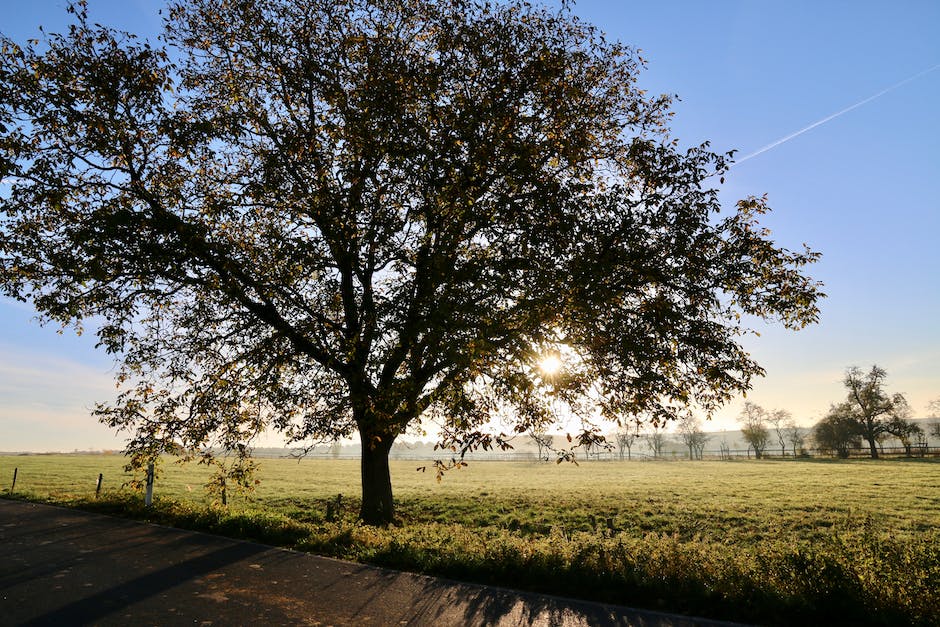Few trees are as revered as the Oak. This stately hardwood has been the symbol of strength and endurance for communities and countries around the world for centuries. In the United States, the Oak is the national tree of seven states. The massive trunks and spreading branches of mature Oaks are undeniably impressive, and the ecological benefits of these powerful trees are just as noteworthy. Oaks are not only good for the environment, but they are also key components in the life cycles of many species of plants and animals.
Yes, oak trees are good for the environment. They are a key part of the forest ecosystem, providing habitat and food for many animals. Oaks also help to improve air quality and protect against soil erosion.
Why are oak trees so important?
Oak trees are an essential part of many ecosystems. They provide food and shelter for a wide variety of wildlife, and their large size makes them keystone species that play an important role in the health of the ecosystem.
The oak tree is a great example of a sustainable and environmentally friendly building material. It absorbs carbon dioxide and returns oxygen into the environment, making it a great choice for those looking to green their homes.
Are oak trees good for biodiversity
Oak trees are considered the kings of biodiversity, as they are a living example of the vital link between native trees and balanced localised biodiversity. The more ancient an oak becomes, the more life it is able to support. This is due to the large number of different species that oak trees support, which in turn helps to balance the local ecosystem.
Just like any other tall tree, an oak tree is very useful to the environment. It casts shades to cool the ground or buildings and stabilizes the soil with its root system. However, what makes an oak tree especially useful is that it produces plenty of oxygen. This is because oaks are fast growing plants.
Do oak trees clean the air?
Oak trees play an important role in improving air quality by storing carbon dioxide and exhaling oxygen through the process of photosynthesis. The leaves of an oak tree absorb airborne pollutants, and it has been observed that one tree can absorb up to 10 lbs of air pollution in a single year. Oaks can live for up to 400 years, making them an important part of the fight against air pollution.
There are many reasons why wood is such a popular choice for furniture and other home goods. One of the main reasons is that it is a very durable material that can last for many years. Additionally, wood is typically very attractive, with a wide range of different grain patterns that can add a lot of visual interest to a piece.
However, there are some potential drawbacks to using wood. One is that it has a high tannin content, which can react with certain oil-based finishes. Additionally, if wood is exposed to wet or cold weather, it can warp and become misshapen. Finally, thin veneers of oak can be difficult to protect, as finishes can react with the adhesive used in the veneering process.
Do oak trees change the soil?
decomposing oak leaves can affect the pH of the soil, turning it more acidic. Over time, this can be a problem for plants that prefer neutral or slightly alkaline soil. However, it would take a LOT of oak leaves falling in the same spot for many years to create significant problems.
Oak trees play an important role in our ecosystem and are currently under threat from a number of pests and diseases. We must do everything we can to protect these trees and ensure they have a bright future.
Why are oak trees sustainable
White oak trees are a sustainable resource for furniture production due to their ability to grow in many types of land without the need for fertilizer or irrigation. Most of the energy needed to manufacture white oak furniture can be generated from burning wood waste, making the overall process sustainable.
Without trees, we would not be able to survive. They produce the oxygen we need to breathe, and they absorb the carbon dioxide that is produced when we breathe out. They also help to filter the air, so that it is cleaner and healthier for us to breathe.
Do oak trees absorb CO2?
Old oak trees are adaptable to increasing levels of CO2 in the atmosphere, as evidenced by their consistent increase in photosynthesis rate over the first three years of a ten-year project. This is a significant finding as it indicates the potential for these trees to continue to thrive in an environment that is becoming more and more hostile to other plant life.
As a keystone species, oaks are very important for the health of forests. They maintain a richer mix of plants, insects, birds and other animals, which makes forests healthier. They are also a great source of food and habitat for wildlife.
How much oxygen does an oak tree produce
1 mature leafy tree can produce enough Oxygen to allow 10 of us to breathe. This is most important of all in densely populated and polluted areas like cities, where average Oxygen levels are expected to be at least 6% lower. In a year, a single mature tree can absorb up to 48 pounds of carbon dioxide.
Most oak species produce a good crop of acorns every two or three years, but the white oak tends to produce a good crop every four to six years. Weather and other factors can affect flowering and fruiting.
Is oak wood good for anything?
Oak wood is a very popular material for furniture and flooring because it is very durable and looks very nice. White oak is slightly more resistant to water damage than other types of oak, so it is often used for items like wine barrels and boats. Liquors that are aged in oak barrels often have a very distinct flavor.
Coniferous trees are some of the best pollution filters around. They can absorb harmful gases and particulates from the air, making the air cleaner and healthier to breathe. If you’re looking to improve air quality in your area, planting a few coniferous trees can make a big difference.
What are the best trees to reduce air pollution
Anti-smog trees are trees that can help to reduce air pollution. There are many different species of anti-smog trees, but some of the most effective are the Norway maple, the silver birch, and the Turkey oak. These trees are able to filter out harmful particles from the air, such as ozone and particulate matter, and can also help to improve air quality by producing oxygen.
The live oak is the most efficient tree at capturing carbon, with the ability to sequester some 10,994 CO2 equivalent over its lifetime. East Palatka holly is second, ranking with a lifelong carbon fixation of 7,321 CO2 equivalent.
Is oak better than bamboo
There’s no denying that oak is a harder and more stable material than bamboo. When it comes to denting, scratching, warping, and cupping, oak is superior to bamboo in almost every way. If you’re looking for a material that will stand up to wear and tear, oak is the way to go.
Oak is a common tree species that is often grown for harvesting. This makes it a sustainable hardwood if responsible forestry management is taking place. Similarly, pine is used a lot in the furniture trade and is also a sustainable hardwood if managed responsibly.
Do oak trees have destructive roots
Although hardwoods such as oaks and elms are popular for their quick growth, this same trait can make them problematic for homeowners. Their shallow roots can potentially damage your foundation and, unlike pine trees, they are not as well equipped to withstand high winds and other severe weather conditions. If you have hardwoods on your property, it is important to have them regularly inspected by a qualified tree service to ensure they are not posing a threat to your home.
The reason that trees like evergreens or oaks cannot make a soil more acidic is because they prefer living in a somewhat acidic soil. However, research has been done on composting leaves and needles from trees and plants and it has been shown that when they are composted and broken down, the pH of the compost is always just about neutral.
Do oak trees increase property value
The findings of this study are very interesting and could have a large impact on the way we view nature and its value. It is clear that even a small change in the proximity of natural features can have a significant economic value. This study highlights the importance of preserving and investing in natural resources.
Yes, oak leaves do have high levels of tannins. This will indeed slow down the decomposition process. However, they can still be composted. All leaves and many fruits have tannins in them. Freshly fallen oak leaves simply have larger amounts.
Why oak trees are dying
Oak Wilt is a devastating fungal disease that is sweeping across the midwest, killing countless oak trees in its path. The fungus grows in the vascular system of the trees, cutting off the supply of water and nutrients and causing the leaves to discolor, wilt and drop. Eventually, the tree will die. This disease is a major threat to our oak forests and must be controlled.
Oak wilt is a very dangerous disease that can kill many different types of oak trees. It is most common in the Eastern United States, but can also be found in other parts of the world. Oak wilt can kill thousands of trees every year, so it is important to be aware of the symptoms and to take action to prevent it from spreading.
Conclusion
Yes, oak trees are good for the environment. They help to improve air quality, provide habitat for wildlife, and help to prevent soil erosion.
This is a difficult question to answer. Some people might say that oak trees are good for the environment because they are a source of food and shelter for wildlife. Others might say that oak trees are bad for the environment because they are a source of pollution.
Jackson Hill is a passionate arborist with years of experience in the field of trees. He developed his fascination with trees at a young age, spending countless hours exploring the forests and climbing trees. Jackson went on to study arboriculture and horticulture at Michigan State University and later earned a degree in forestry from the University of Michigan.
With his extensive knowledge and expertise, Jackson has become a trusted authority on trees and their impact on the environment. His work has helped shape the field of arboriculture and he continues to be a leading voice in the industry.
